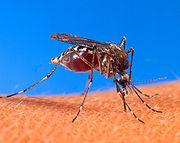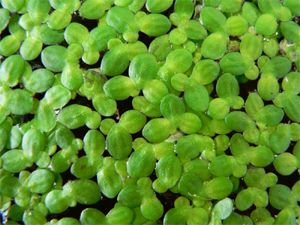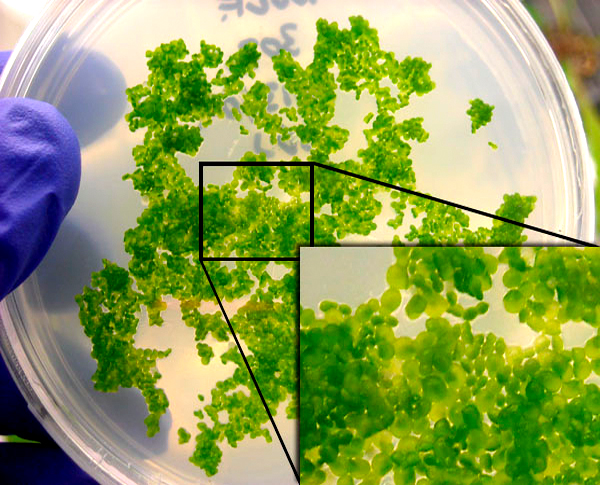Team:Nevada/Project
From 2009.igem.org

Contents |
Overall project
Abstract
Cinnamicide: Producing a Natural Insecticide against Mosquito Larvae in E. coli and Duckweed Cinnamaldehyde is a natural insecticide against mosquito larvae that shows low toxicity towards other organisms. The objective of this project is to engineer the cinnamaldehyde biosynthetic pathway into E. coli to develop an inexpensive and readily available source of this compound. By introducing the genes encoding phenylalanine ammonia lyase (gene 1), cinnamate-CoA ligase (gene 2), and cinnamoyl-CoA reductase (gene 3), it should be possible to produce cinnamaldehyde from available phenylalanine in E. coli. Once we have demonstrated that we can produce cinnamaldehyde in E. coli, we will engineer cinnamaldehyde production in duckweed (Wolfia or Lemna species), a small aquatic plant. Because mosquito larvae feed on duckweed detritus, the engineered plant will serve as an excellent vehicle to deliver cinnamaldehyde for mosquito control.
Project Details
Why Produce an Insecticide against Mosquitoes?
It is estimated that every year over 700 million people are infected by diseases spread by mosquitoes, and over 2 million of them die as a result. Finding a way to control mosquito populations in a cost effective and environmentally friendly manner is an important goal of this project.
Goal 1
The initial goal of this project is to clone the Arabidopsis gene cinnamaldehyde CoA-reductase (gene 3)into an E. coli expression system and test for the production of cinnamaldehyde. Currently, we are building our construct using standard parts from the registry. The goal is to produce a newly engineered part containing the Lac inducible (Lac I) promoter, a standard RBS, gene 3, and and standard double terminator.
Experiment and Results for Goal 1
1. Conduct a three way ligation with LacI(part BBa_R0011), RBS (part BBa_B0034) and a chloromphenicol resistant plasmid backbone (part pSB3C5)using the standard assembly 10 protocol.DONE created composite BBa_*****
2. Conduct a three way ligation with cinnamaldehyde CoA (gene 3), double terminator (BBa_B0014) and chloromphenicol resistant plasmid (pSB3C5). Follows standard assembly 10 protocolDONE created composite part BBa_8888
3. Conduct a three way ligation with recombinants from step 1 & 2 and a tetracycline resistant plasmid backbone (pSB3T5). Standard assembly 10. 3-WAY LIGATION HAS BEEN UNSUCCESSFUL TO DATE
4. Alternative approach to step 3- Two-way ligation. Isolate gene 3 + double terminator and clone it into the chloromphenicol plasmid containing LacI+ RBS. IN PROGRESS
 "
"



